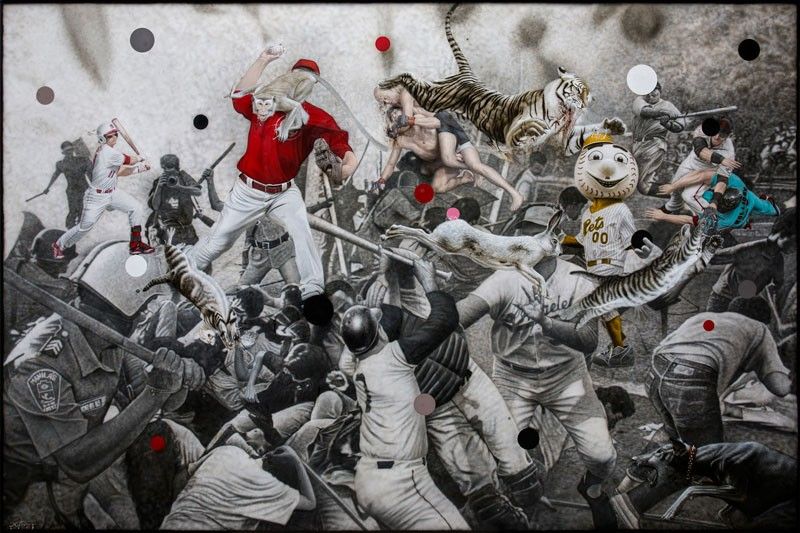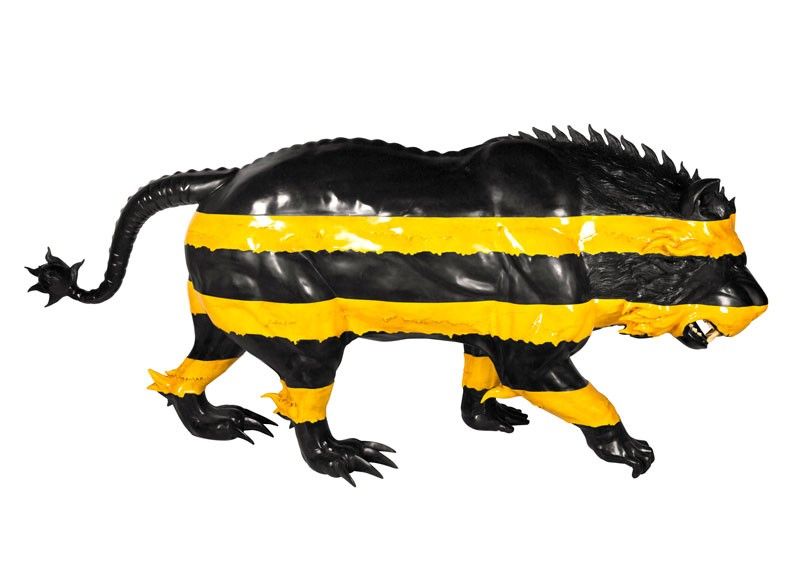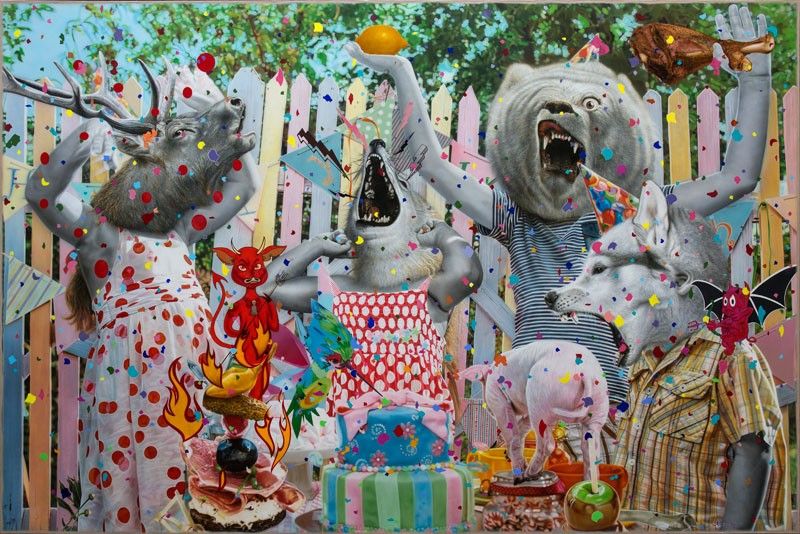Ronald Ventura: The persistence of art in a plague-stricken world

The past two years have been apocalyptic for all of us. And the end of this particular arc in this suspenseful season of the world is not yet in sight.
But for artists, art must be done — during a pandemic, despite a pandemic, and hopefully (if we emerge from it unscathed) after a pandemic. Ronald Ventura’s “Introspective” at the Karuizawa New Art Museum in Nagano, Japan recently ended its 10-month run last June 26 after opening on Aug. 7, 2021.
Between gallery and museum shows, Ventura broke his own record at Christie’s Live Auction in Hong Kong with his “Party Animal” acrylic-and-oil painting on canvas, which was sold on May 24, 2021 for HK$19,450,000. A year later, his “Gulp” polyurethane painting on a Porsche 911 hood was sold in the same auction house for HK$7,560,000. People in the art scene see this as a testament to how the interest in the works of artists such as Ronald Ventura continues to soar — despite the health crisis and its attendant lockdowns and restrictions.
The museum show in Japan was an “introspective” and not a “retrospective,” Ventura points out. It is not as if a specific era of his art practice had died and the carcass of which had been installed for all to see. Not a museum of dead things, but rooms of artworks captured in their evolution into something else. And that something else not even the artist knows. Only tomorrow dictates its breathtaking beauty or its tempestuous terror.

The ideas are constantly developing, everything is in progress, nothing is dead or static — explains the artist.
The strategy for mounting the show for each of the “rooms” or sections germinated from Ventura’s predilection for putting specific ideas for artworks in separate folders. He has a multitude of those, just waiting to be opened, reopened, filed, refiled and realized. Sometimes for a specific exhibition, the artist would pick a few things from each folder and refashion them into a new, totally different grouping. He says just think of these folders as rooms in the consciousness of an artist who is always evaluating himself and his art. The possibilities, the pairings are infinite, enticing to pore over.
For the Karuizawa show, there were six exhibition spaces or “rooms of possibilities” curated in a way wherein viewers can get a sense of focus, a semblance of a story. (Of course, there will be as many stories as there are viewers.) The artist explains that each of his shows in the past does not entirely capture his state of mind. Just as he is wrapping up work for a particular exhibition, his restlessness makes him wander off into new forms, fresh approaches, and untested methods of expression. Overlaps occur. The process is continuous. Those rooms at Karuizawa were not built for comfy categorization. They served as chambers of change. Evolution is permanent; love of specific forms, temporary.
A certain playfulness dominated the first floor space as Spongebob, Bart Simpson and a bulldog mascot were recruited into the artist’s meta-pop world — cutesy and ever curiouser.
A dance of geometry and a prevailing dread filled the voids of Exhibition Space 1. The pieces in Ventura’s “Black Star Series” in cement, fiberglass, resin, metal, acrylic and LED held court in menacing, black-magical fashion.
Installed in Exhibition Space 2 were Japanese pop figures transitioning into something else (“Humanime”), collectibles ascending into artfulness, and art itself becoming fun yet oracular at the same time.
Exhibition Space 3 was the room of epic canvases. Four untitled oil-on-canvas works presented a worldview of madness, magic and magnificence.
The artworks in Exhibition Space 4 came across as traffic signage, all right, but what these road signs were warning pedestrians about is cryptic, even apocalyptic. “There is danger in the invisible and the invasive. Something is out there, better yield.”

All hell broke loose in Exhibition Space 5 as Neoclassical paintings were surrounded by sculptures of bones, clouds, balloons, television sets, impaled bodies, impaled heads, and “Zoomanity” figures.
Exhibition Space 6 was a roomful of graphite and oil renderings placed on stainless steel charts. This was the observation or diagnosis room. A big chunk of humanity feels sickly, but it may not be indicative of sickness after all. Many in the Middle Ages have mistaken transcendence for illness or possession. And many of Ventura’s figures — although coming across as menacing and maniacal — possess a certain grace, grandeur, and the gift of having crossed over.
And crossing out the plague and a blind compliance to a post-Truth world — keeping calm, unbroken through it all — that is the next great adventure.


















